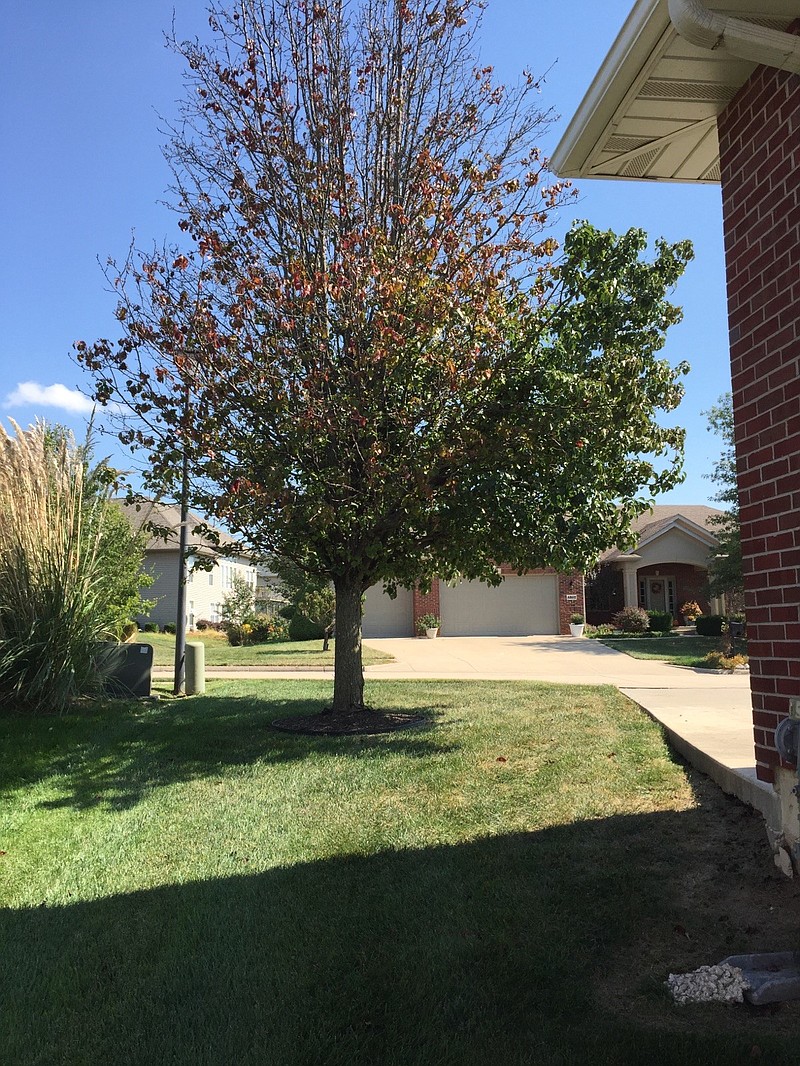Q: I am concerned about my Bradford pear as it has been receding all through the growing season. It also has reddish spots on leaves and a bunch of those fell off. I'm used to it with these glossy, deep green leaves and full canopy. What should I do?
A: Bradford pears got afflicted this spring by a foliar disease "rust" disease. While it can be treated with a fungicide spray, many homeowners don't really want a tree they'll have to spray a couple of times each spring. Some springs are worse than others for the disease, but once it has affected the tree may always cause some problems. I am concerned about the thinning of the crown. If next spring it doesn't leaf out nicely up in the crown, I would remove the tree. Bradford pears are not long living trees, and it would be a very scrappy looking tree for a number of years to recover, if it ever did. Coupled with a potential annual requirement to spray it for it to look OK, there are better options for a shade or ornamental tree.
Q: I have several arborvitae trees and needed to fertilize them earlier this summer, as I am on sandy and rocky soil by the Lake, and their color lightened. They're better now, but I wanted to fertilize again and didn't know if the timing was different for evergreens than for deciduous trees.
A: Good question, as we say mid- to late fall is best for shade trees. I checked University of Missouri's publications in this area to see if I could find something specific to evergreens. There wasn't anything. A University of Minnesota publication recommended early spring; March would be ideal for Missouri. They noted if the trees were "nutrient stressed," then a late summer/early fall application could be helpful for coming through the winter in better shape. A dry time-release fertilizer should be fine in the mid to late fall period; you could do that soon if you don't want to wait until spring. Make sure to mulch the arborvitae and water if it gets unusually dry.
Q: I have a linden tree and it gets munched by Japanese beetles every year. Will they kill it eventually? Can I do anything to protect it? I really don't want to harm other pollinator insects.
A: Every June and July, Japanese beetles devastate lawns and gardens. Although they will seldom kill trees or shrubs, they can slowly weaken them, making them subject to secondary pests and disease. Linden trees are among their favorites, as they emit a strong floral scent in mid-June, which attracts them. Because they flower when you need to protect them, it may be harmful to pollinator insects to treat the tree with a systemic insecticide. This contrasts with a weeping cherry I have, which was mostly defoliated last year. Once it finishes flowering in April, I can treat it with a product like Bayer Advanced Tree and Shrub Insect Control and be confident it won't harm pollinators. What to do in your situation, is no easy answer.
The best/safest would be to apply a foliar insecticide to the linden tree in the evening, about mid-June. I realize this may be impractical if the tree is large. This is why I've seen linden trees 'munched' year in year out around Jefferson City and Columbia. While they continue to survive, they look scrappy from June on. The only consistent advice I have seen is (that since getting most of your leaves eaten is "stressful") to keep the trees watered during dry spells and keep them mulched, as much as is practical.
Q: How is the pumpkin crop this year? I see some different ones now, some pinkish or gray and some all warty. Are they just ornamental?
A: The pumpkin crop appears to be quite good. Having a slightly dry period during the fruit ripening (late August through September) is good as too much moisture can cause fruit to rot. For Mid-Missouri the overall conditions this summer was decent, and growers who had a good stand have mostly ended up with a quality crop.
The pumpkins you describe are loosely referred to as specialty types and some are heirlooms. Many are excellent to eat (e.g. Long Island Cheese, Blue Hubbard and Jarrahdale, peanut types). You can get double usage with these, as long as you don't carve them up. Consider displaying these (intact) through Halloween and then eating them later. They can sit out for quite some time and still be fine to cook.

